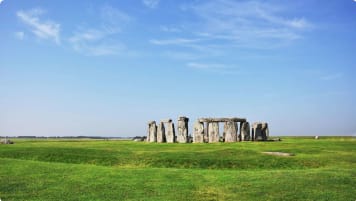Australian Megafauna
Explore the ancient history and incredible natural heritage of Australia, with a dive into the strange and fantastic story of Australia's ancient megafauna. Odyssey offers small group tours for mature and senior travellers, couples, and solo travelers to Australia.
15 Apr 21 · 7 mins read

Australian Megafauna
Harkening back to a surreal and exciting chapter of Australia‘s natural history, the era of Australia‘s megafauna sees a recurrence of the many familiar faces seen in our native wildlife today, such as the much loved fuzzy wombat, or the iconic Kangaroo. However, this ancestral wombat wasn’t quite so small and cute as its modern cousin, instead being inflated to the size of an impressive 3 tonne hippopotamus. The kangaroo too was much larger than its modern counterpart, standing over 2m tall and weighing as much as an adult tiger. The era of Australia‘s megafauna occurred till around the late Pleistocene, when the climate in Australia was much cooler, and now desertified regions sported more arable grazing land and rugged shrubs, capable of sustaining these giant animals. Even more fascinating is the overlap between the arrival of Australia‘s aboriginal people and the period of Australian megafauna, with many dreamtime stories evoking imagery of Australia‘s mystical or folklore creatures strikingly similar to these megafauna species. This shared past has even been confirmed in the fossil record, with many species of extinct Australian megafauna sharing the Australian continent with early humans, and possibly even being hunted by them.
(Title Image Credit: Laurie Beirne, Source)
Related Tours

days
Feb, Mar, May, Jul, Sep +2Guided small group motorcycle tour of World Heritage sites in Victoria and South Australia
Visiting
Discover the World Heritage Sites of the southern states of Australia travelling in a small group tour of like minded motorcyclists. A journey of learning around the southern edges of the Murray Darling basin and up to the upper southern part of this complex river basin north of Mildura. We start and end in Adelaide, stopping in Broken Hill, Mungo National Park and other significant locations.
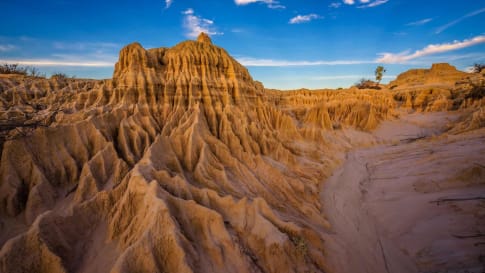
days
Mar, May, Aug, Sep, Oct +2Small group tour of World Heritage sites and more in the Southern States of Australia
Visiting New South Wales, South Australia
Discover the World Heritage Sites of the southern states of Australia travelling in a small group tour. A journey of learning around the southern edges of the Murray Darling basin and up to the upper southern part of this complex river basin north of Mildura. We start and end in Adelaide, stopping in Broken Hill, Mungo National Park and other significant locations.
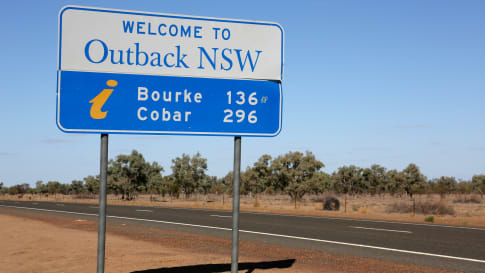
days
Mar, JunSmall group tour of Eastern and Central Australia
Visiting New South Wales, Northern Territory
Small group tour for couples and solo travelers touring most of the Australian territory, travelling through the outback and visiting many of the famous sights as well as off the beaten track locations, giving you the opportunity the explore and meet our people in the most remote locations. Learn about the history of the people who explored the deserts, from indigenous communities to Europeans, as well as Burke and Wills, visit Bourke, Normantown, Charters Towers far north Kakadu, returning back along the Stuart Highway to Adelaide and cross country to Sydney through the Blue Mountains.
Species of Megafauna
There are an enormous variety of species of Australian megafauna, with many of their familiar descendants or relatives known to us today. Spanning multiple animal kingdoms, whether marsupial, monotreme, reptile, or bird, megafauna was found across the continent, until roughly 10,000 years ago. Some of the more notable, or impressive species include:
Diprotodon
The largest of Australia‘s known megafauna species, the diprotodon is a relative of modern day wombats and koalas, being a quadrupedal marsupial weighing up to 3,000 kilograms and standing 2m tall at the shoulder. Diprotodon was a herbivorous grazing animal, with few natural predators due to its enormous size. It is thought that the diprotodon is one possible candidate for the aboriginal legend of the ‘bunyip‘, with its bones often being identified as such, and sharing a number of characteristics with the legend. Diprotodon went extinct roughly 44,000 years ago, though given some accounts of Aboriginal habitation go back as far as 120,000 years, even a conservative estimate points to this as a real possibility.
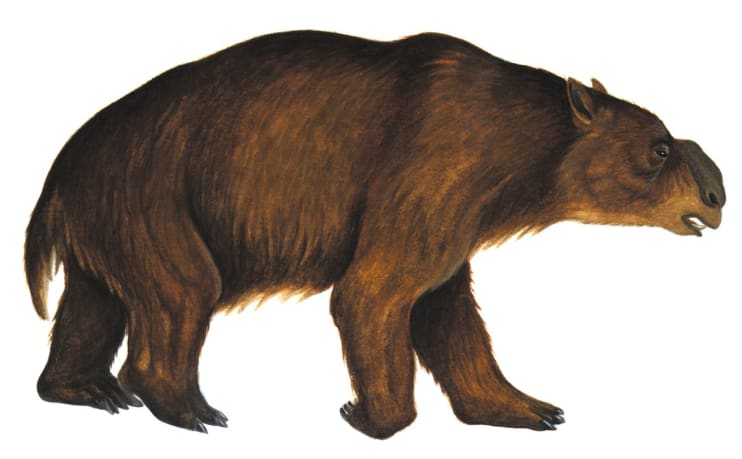
Thylacoleo Carnifex
Otherwise known as the marsupial lion, this carnivorous marsupial was Australia‘s largest meat eating mammal, it grew to about a metre and a half long, and weighed roughly 160kg, similar to a mature female lion or tiger. Despite being colloquially known as a ‘lion’, this creature was more closely related to today’s wombats and koalas, and sported a unique physiology that helped it take down its prey. The marsupial lion is unique amongst marsupials in its physiology, featuring retractable claws, a semi opposable thumb with gigantic hooked claws, a short stout nose, and fused plate-like teeth for cutting and tearing. This suggests that the marsupial lion likely took down its prey, such as the giant wombat or giant kangaroo, by hooking up, and climbing up their bodies, before killing them with the most powerful bite-force per square inch of any mammal, living or extinct.
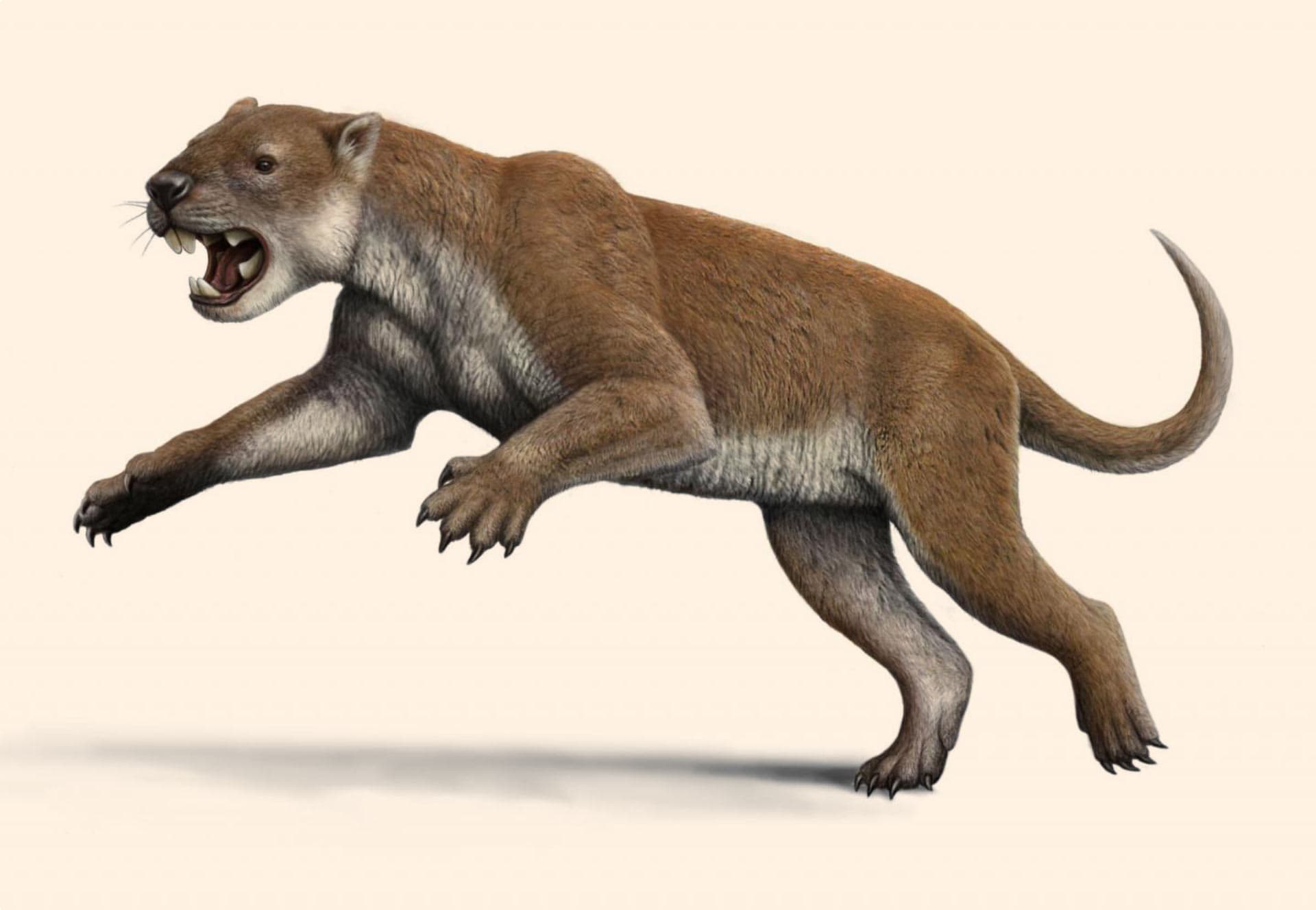
Procoptodon Goliah
When in comes to marsupial megafauna, procoptodon goliah, or the giant kangaroo, is one of the better known. Standing, just over 2m tall, and weighing as much as 240kg, this enormous kangaroo shared much in common with its smaller cousin today, though there are a number of key physiological differences. Unlike its modern relatives, these giant kangaroos had far shorter snouts, featuring a far more compressed jaw common to other members of the species. It also had far longer arms than modern kangaroos, likely used for grasping branches, as well as a single large fused toe. Though this kangaroo stood at a similar height to a large modern red kangaroo, it was much sturdier and powerful in build, being about 2 and a half times as heavy as its modern counterpart.

Megalania
Aside from Australia‘s marsupial megafauna, there were a number of giant reptiles that were also found during this era. Of these, the largest reptile was megalania, an enormous goanna that served as the apex predator of its time. Found across Australia, megalania was akin to a komodo dragon or goanna in appearance, though much larger and deadlier, being fast, huge, and with a powerful, venomous bite. Megalania was the largest of Australia‘s huge reptilian carnivores, growing up to 7 metres in length, and weighing as much as 1,940 kg, though these measures have been disputed due to varying finds and estimates. Regardless of exactly how large it was, it is likely that Megalania was the apex predator of its time, with fossil evidence noting teeth marks on the bones of a number of megafauna fossils. Though megalania went extinct about 50,000 years ago it is likely early aboriginal Australians could’ve encountered some of these terrifying lizards, though as time progressed, they, like many other megafauna species dwindled and eventually disappeared.

Genyornis
A huge flightless bird, the genyornis was the last of the great ‘thunder birds’ endemic to Australia. Standing at a height of 2 metres, and weighing about 240 kilograms, this bird was the largest of its time, as well as the last of its genetic family, with its ancestors such as the late Miocene Dromornis stirtoni, growing even larger and heavier. Unlike other large Australian birds such as the emu and cassowary, the genyornis actually shares its ancestry with birds such as geese or ducks, albeit at quite the distance. It is thought that despite its enormous size, and powerful crushing beak, the genyornis and its ancestors were actually herbivorous grazers, with their size allowing them to range across huge distances, much like the modern emu. Genyornis also shared the Australian continent with aboriginal Australians for tens of thousands of years, with depictions found in cave, and rock art dating back tens of thousands of years.
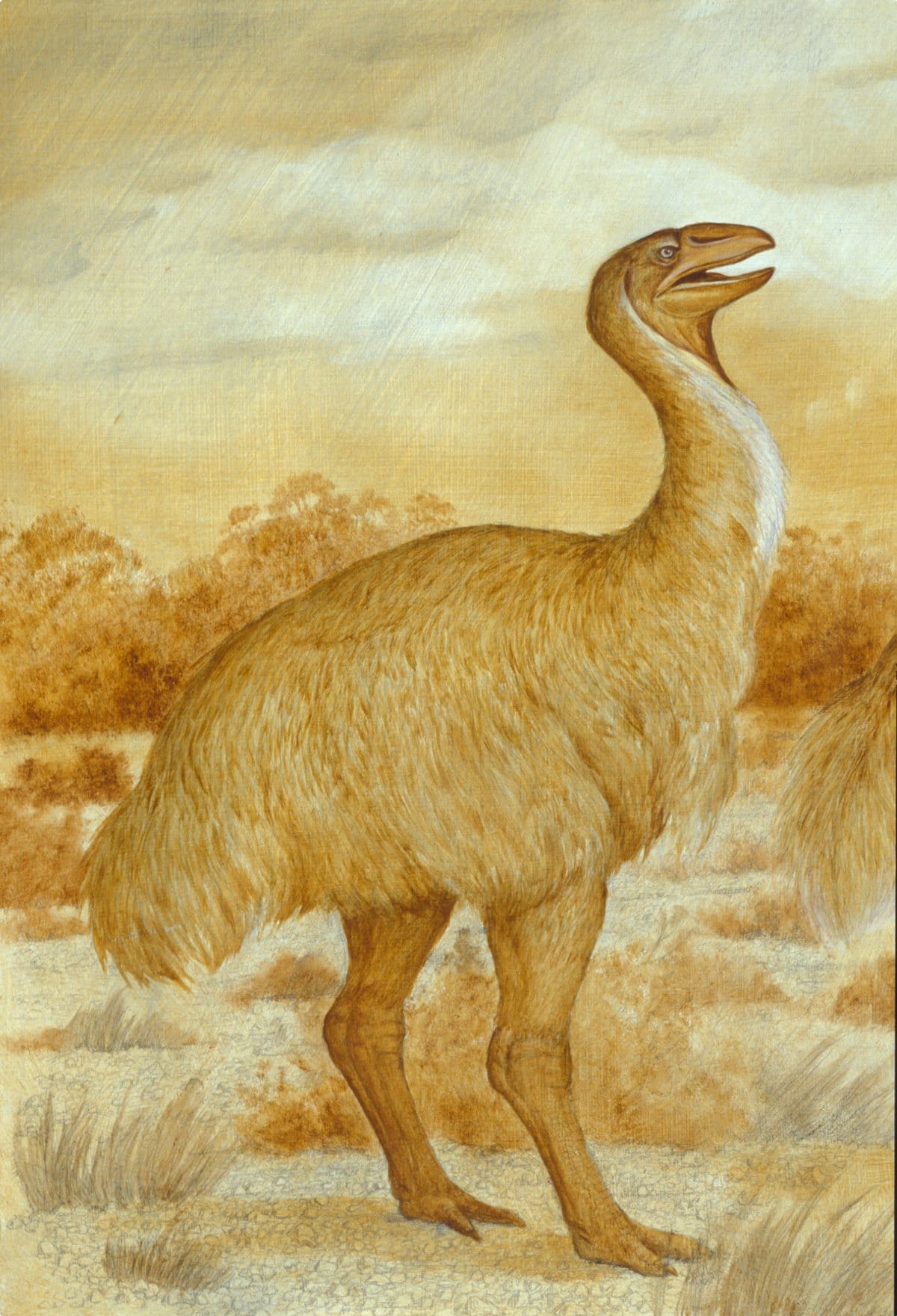
Humans and Australian Megafauna
The timing of human arrival on the Australian continent is a hotly contested topic, with some estimates dating early humans around 60,000 years ago, though as more information and modern dating techniques have come to light, this figure has risen as high as 120,000 years, making it the longest continual civilization on the planet. It is thought that Australia‘s aboriginal people arrived on the continent via northern Australia, before spreading out across to continent rather rapidly, including into Australia‘s interior. Even with a conservative estimate of 60,000 years ago, this period overlaps considerably with the existence of a large number of Australia‘s megafauna, including all those listed in this article, and when the possible 120,000 year figure is taken into account, the capacity for human engagement in the ancient Australian ecosystem has the potential to revolutionize our understanding of our ancient natural heritage. Evidence of this crossover period can be seen in numerous rock art depictions from across Australia, such as the Gwion Gwion rock paintings in the Kimberley, which depict images of the marsupial lion, or other in Kakadu showing the genyoris. Despite human interaction being a major cause of megafaunal extinction in the northern hemisphere, the case in Australia is a more complex story.

Megafaunal Extinction & New Visitors
While the extinction of megafauna across much of the globe was symptomatic of wider trends in global ecosystems around the late Pleistocene, with an extinction pattern of large animals being one of the more noticeable trends. In the case of mainland Australia, it was a number of long, and mid term factors that eventually saw the end of the megafauna era. While early humans could have possibly contributed to this trend, both through direct hunting, as well as competition for resources, population estimates at this early point in history were far too low to effect broader ecosystem change on a large enough scale to be the primary cause. Instead, it is argued that extreme environmental change was likely the cause, rather than human activity, or a single extinction event. Megafauna extinction was a continual trend since the mid-late Pleistocene, with a period of extreme temperature variation, and intermittent ice ages causing dramatic changes in the natural biosphere. The last, and most extreme of these events occurred 21,000 years ago, even pushing human habitation to just 20% if its previous extent. The lack of access to resources, combined with this shock, was likely the final nail in the coffin for many of Australia‘s largest creatures, with the fragile balance barely maintained for hundreds of thousands of years cascading beyond the capabilities of many larger species to adapt, or venture further for nutrition. Following this environmental turmoil, the introduction of foreign species, such as the dingo, also had major repercussion for native Australian wildlife, with marsupial carnivores such as the thylacine or Tasmanian devil unable to compete, only surviving on the island of Tasmania. This extinction wave of native Australian species has been further accelerated since the arrival of Europeans to the island continent just over 200 years ago, with many of Australia‘s small and medium native marsupials under threat.
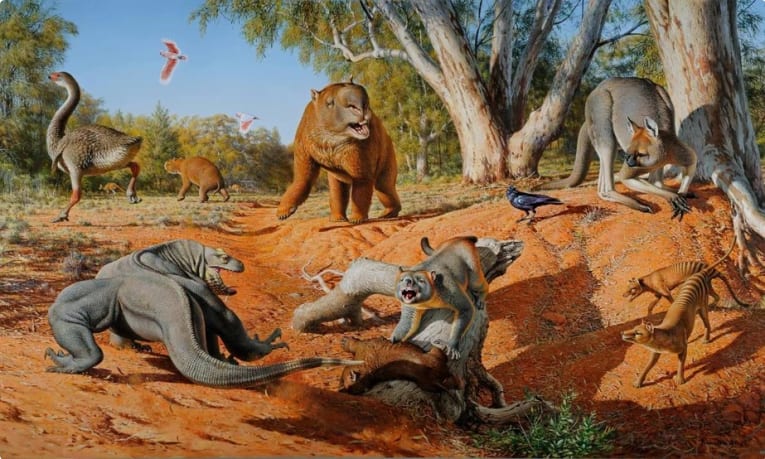
Articles about Australia published by Odyssey Traveller:
- The Kimberley: A Definitive Guide
- Uncovering the Ancient History of Aboriginal Australia
- Aboriginal Land Use in the Mallee
- Understanding Aboriginal Aquaculture
- Mallee and Mulga: Two Iconic and Typically Inland Australian Plant Communities (By Dr. Sandy Scott).
For all the articles Odyssey Traveller has published for mature aged and senior travellers, click through on this link.
External articles to assist you on your visit to Australia:
Articles

Aboriginal Art
Senior and mature couples and solo travellers remain curious but often informed about the role Aboriginal art plays in the indigenous community and the various styles. This article seeks to provide a platform for this collection of small group tours of upto 15 people into the Australian outback where often Aboriginal art styles are encountered.

Aboriginal Rock Art in the Kimberley, Australia
The Kimberley is explored on a small group tour for mature and senior travelers, couples or singles. Both Aboriginal community is studied and an appreciation of the wet and dry seasons. This guide on the Kimberley assists the traveler as you start from Broome and travel round via Halls creek and Purnunulu national park over some 17 days in a group of up to 12 people.
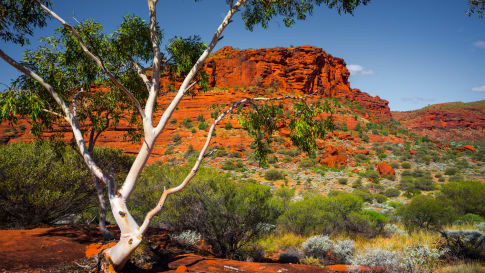
Alice Springs, Australia
Explore the sights and history of Alice Springs, with its amazing Indigenous art, rugged early settlement, and dramatic natural landscapes, Alice Springs is one of the Northern Territory's most popular highlights. Odyssey offers small group tours for mature and senior travellers, couples, and solo travelers to Australia and the Northern Territory.

Ancient Aboriginal trade routes of Australia
Ancient Aboriginal trade routes of Australia Trade was a central part of life for Aboriginal people prior to the British settlement of Australia. Trading routes criss-crossed the nation, dispersing goods, information, technologies and culture thousands…
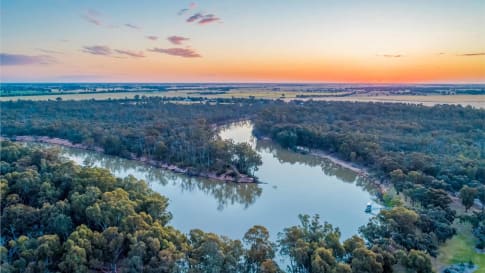
Appreciating Australian River Systems
Appreciating the linking of the river network into the Australian, history, culture and landscape on a small group tour for mature and senior travellers of couples or solo travellers is an integral part of understanding the continent of Australia and Aboriginal settlement.

Arnhem Land Songspirals
Article about the importance of songlines in travelling from place to place. Supports small group tours learning about Aboriginal culture of Australia for couples or singles mature travellers exploring outback Australia.
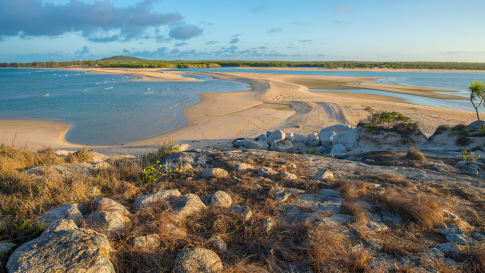
Arnhem Land, Northern Territory
To enter Arnhem land a permit is required for visitors. Explore and learn about the Aboriginal community in Arnhem land as part of a small group package tour that includes Darwin and the Kakadu. These are small group tours of upto 12 like minded mature and senior travellers, couples or solo travellers interested in exploring as they tour.

Australia’s Ocean Frontier: Exploring the Eyre Peninsula, South Australia
Learn about the landscape and the recent settlement of this Peninsula on the South Australian coast. To see and learn more join on the this collection of Australian small group package tours for mature and senior travellers, couples or singles or join the Eyre & York peninsula program.

Broome, Australia
Broome an introduction. Brome is the beginning and end of the Kimberley small group tour offered by Odyssey in the dry season. With its own history read on to learn more about this coastal frontier town. For mature and senior travellers this is a great tour examining all aspects of the Kimberley from the indigenous community, the landscapes and the wildlife. Designed for couples and the solo traveller.
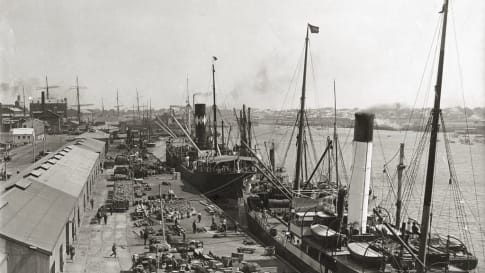
Exploring the museums of Port Adelaide, South Australia
8 days exploring Adelaide city and surrounds on small group tour for mature and senior travellers, couples and solo travellers visiting include Port Adelaide, The Barossa valley and Mclaren Vale and Fleurieu Peninsula.

Flinders Ranges National Parks, South Australia
Rugged mountains, tree-lined gorges, an abundance of wildlife, and important Aboriginal works : the national parks of the iconic Flinders Ranges including Wilpena pound are the beginning of Australia's outback that we explore on a small group tour for mature travellers.
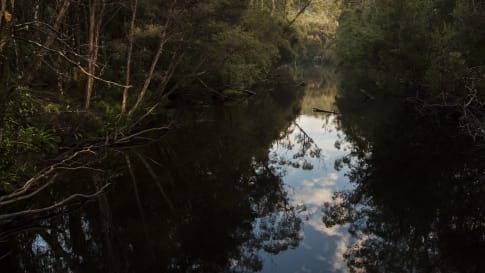
Ice age archaeological sites of the Tasmanian Wilderness World Heritage Area, Australia
Ice age archaeological sites of the Tasmanian Wilderness World Heritage Area, Australia The Franklin-Gordon Wild Rivers National Park is one of the most remote places in Australia, a wild labyrinth of winding gorges, rushing rapids,…
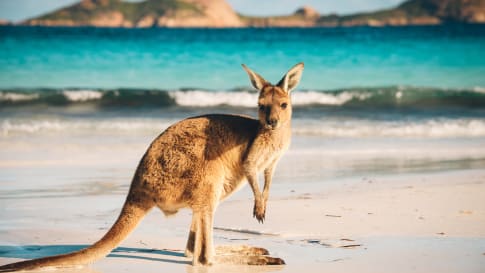
Iconic Animals of the Australian Outback
Explore the wildlife and natural heritage of Australia, with its iconic marsupials, birds, reptiles, and surreal monotremes in the Outback. Odyssey offers small group tours for mature and senior travellers, couples, and solo travelers to Australia.

Motorbike tours for the mature and senior traveller
Best Motorcycle tours for the mature and senior traveller. This is the time for that motorcycle trip you may have dreamt about becoming a reality.Odyssey Traveller offers you the opportunity to ride through some of…
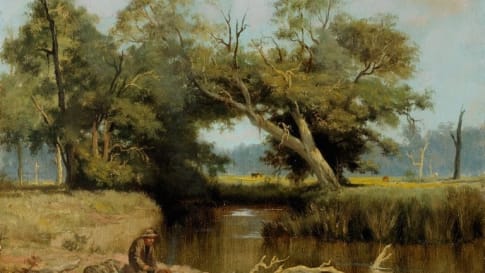
Winton and Dinosaurs, Queensland
Small group tour for senior and mature travellers to Outback Queensland includes Winton and its Dinosaurs as well as Longreach, Cathedral Gorge and Aboriginal art, & Barcaldine.
